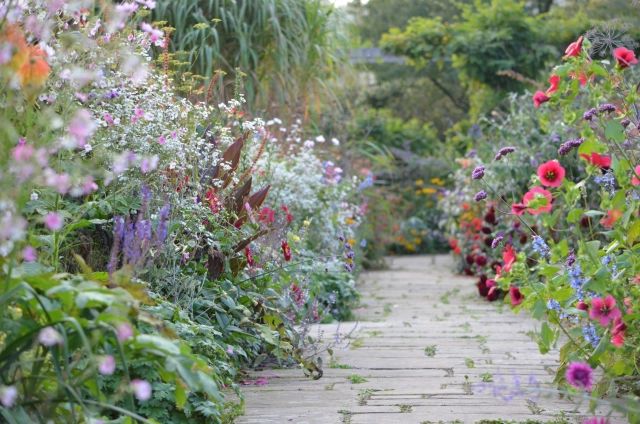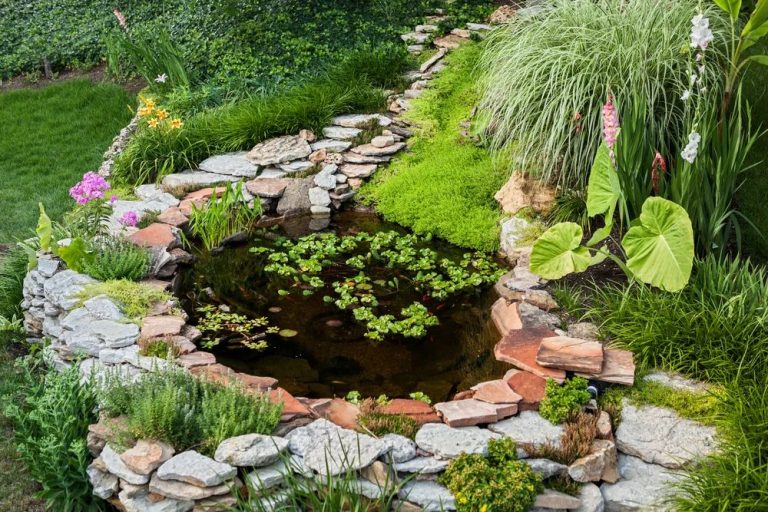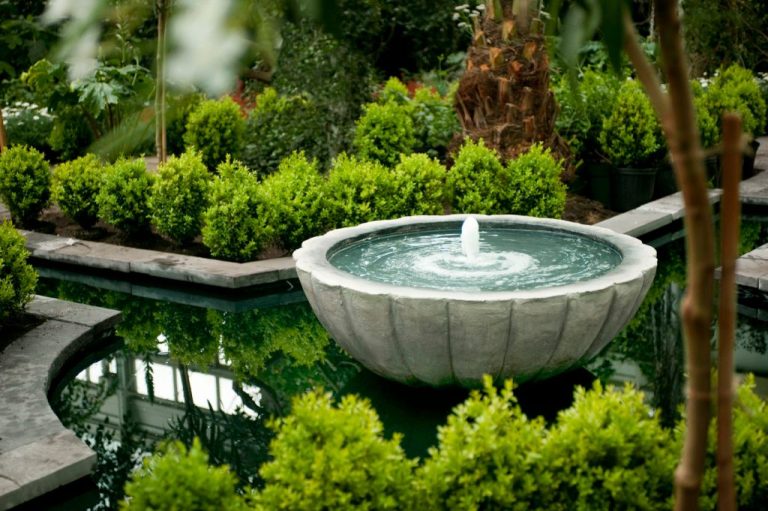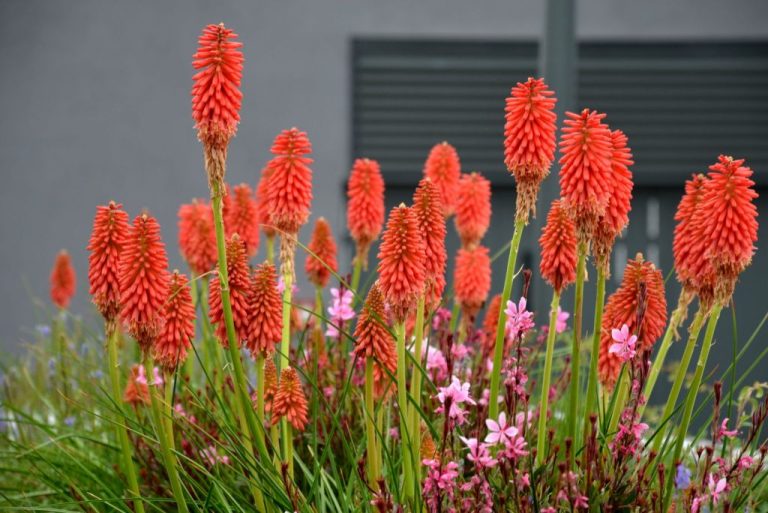English Garden Design: Timeless Beauty And Grace
The English garden design style has a rich history spanning centuries, with origins in medieval gardens and influences from Chinese, French, Dutch and Italian landscapes. The style rose to prominence in the 18th century during the ‘English Landscape Movement’ led by visionaries like Lancelot “Capability” Brown, William Kent and Humphry Repton, who advocated for more naturalistic and picturesque gardens compared to the more formal styles popular at the time.
As noted in A Brief History of English Garden Design (source), the distinguishing features of the English garden include “a lawn, gravel paths, billowing shrubberies, trees blocking views, streams, informality, surprise views and incidents within.” This unique and quintessentially English style has had an enduring influence around the world.
Key Characteristics
English gardens are characterized by irregular, natural shapes and forms rather than geometric designs. The style aims to recreate nature rather than exert control over it. Curving pathways, sinuous beds, and asymmetric plantings mimic the randomness found in the natural world. This organic style stands in contrast to the formality of French or Italian Renaissance gardens with their precisely clipped geometrical hedges, straight lines, and symmetrical layouts.
English gardens embrace asymmetry, irregularity, and informality to appear more naturalistic. The plants and trees are often clustered in non-uniform groups rather than planted in rigid rows. Beds have soft, flowing edges that curve and meander. The overall effect feels relaxed, easygoing, and rustic compared to the regimented designs of formal gardens.
This informal aesthetic was revolutionary in the 18th century when English gardens first rebelled against French and Dutch formality. The English style signified a new Romantic attitude toward nature, celebrating its mystery, variety, and picturesque charm. This looser approach allowed gardens to complement their natural settings rather than impose strict order.
While elements may appear random, skilled designers carefully craft the illusion of naturalness. The seeming chaos actually involves great thought to achieve harmonious compositions. But the goal remains hiding the gardeners’ hands to make the landscape look artlessly created by nature itself.
Use of Water
Water features like ponds, lakes, and streams have long been an essential element in English garden design. The style draws inspiration from romantic ideals of nature, aiming to recreate an idyllic pastoral landscape. Water helps achieve this by providing a sense of tranquility and movement.
Ponds and lakes offer reflective surfaces that enhance the garden’s beauty. They provide an elegant focal point amid the greenery and blooms. Streams and rivulets winding through garden paths generate pleasant sounds that soothe and relax. The interplay of light and water creates an atmosphere of harmony.
Many famous gardens highlight water features. At Sissinghurst Castle Garden in Kent, a long rill flows between herbaceous plant beds. Hidcote Manor Garden in Gloucestershire contains numerous ponds and a winding stream. Even smaller gardens incorporate simple water elements like fountains and rills to add to the pastoral, romantic effect that defines the English style.
Water requires careful integration into the overall landscape design. It should look like a natural part of the garden, rather than an artificial add-on. Proper placement creates delightful vistas, reflections, and movement to delight the eye as visitors explore the space.
Pathways
Instead of geometric patterns or straight lines, English garden pathways meander organically through the landscape. As Winding Paths and Hidden Spaces describes, the pathways are “winding and organic, leading to hidden spaces”. Gravel or grass walkways curve gently through flower beds, lawns, and wooded areas. Rather than moving directly from point A to point B, strollers follow the twists and turns, discovering new views and garden features around each bend.
This serpentine layout creates an element of mystery and surprise. You never know what you’ll find as you follow the path through an English garden. The meandering trails invite leisurely exploration and a slower pace to appreciate the landscape. As one writer describes it, the pathways mirror “my own process of growth and evolution”. Each turn reveals another step in the journey through the garden and through life.
Plants and Trees
The variety and arrangement of plants and trees is a key characteristic of English garden design. Carefully selected plant varieties are combined in aesthetic and functional groupings. Some quintessential plants include roses, foxgloves, hydrangeas, delphiniums, wisteria, clematis, hollyhocks, and peonies.1 Majestic trees like oak, beech, and lime are artfully placed alongside flowerbeds and pathways.

The overall effect is a lush, colorful landscape with year-round interest. Plants are chosen for their beauty and to evoke a romantic, welcoming ambiance. Groupings are designed to complement architecture, frame views, provide enclosure, attract pollinators, and transition gracefully across the seasons.
Ornamentation
English gardens are known for their ornamentation and decorative structures that add visual interest. Popular garden ornaments include statues, sundials, follies, urns, benches, and bridges. Statues and sculptures depicting mythological figures, animals, or poetic themes were prevalent. Greek and Roman statuary replicas were common to evoke a sense of the classical past.
Follies are another traditional ornamental structure, built as decorative conversation pieces. Common follies are mock ruins, towers, temples, grottoes, and even pyramids. These whimsical structures serve no real purpose other than as striking focal points within the garden’s design. Elaborate sundials act as both sculptural ornaments and functional timepieces. Ironwork, stone, and wood craftsmanship can be seen in benches, gates, gazebos and pavilions scattered elegantly throughout the grounds.
Garden ornaments provide a touch of artistry and visual delight. They demonstrate the care and craftsmanship put into an English garden’s design and add an air of romanticism and charm.
Enclosure
Creating enclosed spaces is an important feature of English garden design. Hedges, walls, and fences are used to define and separate different garden “rooms” or areas. According to Homes & Gardens, enclosure helps provide the gardens with structure and form.
Hedges are very commonly used for enclosure. They create natural, living boundaries around spaces. Popular hedge plants include boxwood, yew, holly, privet, and beech. Hedges help delineate separate garden rooms and hide unsightly spots. They also provide visual interest and texture.
Low brick or stone walls are another traditional way to enclose spaces in the English garden. They provide structure while still allowing views across spaces. Walls with climbing plants grown on them add to the charm. Wrought iron or wooden fences may also enclose spaces, often with plantings woven through them.
By using hedges, walls, and fences thoughtfully to divide up the garden, a sense of discovery is created as one moves through different enclosed outdoor “rooms” in the English garden.
Views and Vistas
English gardens were designed to guide visitors on a “tour” through various experiences. One of the key techniques was incorporating carefully framed views and vistas to highlight focal points and create a sense of anticipation. As visitors walked along winding paths, new views would open up, often terminating at a folly, statue, or other decorative structure to emphasize the scene.
According to Wikipedia, “Created and intended to look natural rather than artificial, the English garden presented an idealized view of nature. Its sweeping vistas, rolling lawns studded with trees, lakes, and winding walks provided access to an array of plantings and landscape features” (https://en.wikipedia.org/wiki/English_landscape_garden). By incorporating both open and enclosed areas, designers could maximize the impact of focal points and scenic highlights.
The English garden’s signature lush plantings were used strategically to frame and accentuate views. As visitors traveled the garden route, new scenes would unfold in a carefully curated sequence for visual delight.
Famous Examples
England is home to many magnificent gardens that exemplify English garden design. Three of the most famous and influential are Stourhead, Sissinghurst, and Hidcote Manor.
Stourhead, located in Wiltshire, is one of the most iconic English landscape gardens. Created in the mid-18th century, it is renowned for its picturesque lake and Palladian bridge surrounded by rolling hills and exotic temples. Stourhead demonstrated how to seamlessly blend architecture into the natural landscape (https://www.spokesman.com/stories/2011/sep/25/touring-the-historic-hidcote/).
Sissinghurst Castle Garden in Kent was designed and planted in the 1930s by renowned author and gardener Vita Sackville-West. It is admired for its series of intimate “garden rooms” separated by clipped hedges and stone walls. Sissinghurst’s romantic, abundant planting style has been tremendously influential (https://flourishmentary.com/english-landscape-gardens/).
Hidcote Manor Garden in the Cotswolds is considered one of England’s great small gardens. Designed in the early 20th century, it is composed of a series of creatively planted outdoor rooms, each with its own unique character. Hidcote displays exceptionally fine attention to horticultural and design detail (https://www.spokesman.com/stories/2011/sep/25/touring-the-historic-hidcote/).
Influence and Legacy
English landscape gardens had a major influence on landscape design worldwide, starting in the 18th century. The style was copied not just in Europe, but in places as far away as the United States and India. This occurred as estates were established in the European manner and gardeners trained in England were hired to design gardens abroad. In the US, gardens such as Monticello took inspiration from English landscape style.
One reason for the widespread influence was the circulation of pattern books and instruction manuals, which allowed the English style to be replicated elsewhere. Books by landscape designers such as Batty Langley, Humphry Repton, and J.C. Loudon were widely distributed.
The principles of the English garden, with its focus on naturalistic appearance, irregular forms, and integration of house and gardens, had an enduring effect on landscape design. These ideas helped shape many public parks and naturalistic gardens created in the 19th and 20th centuries.
According to this source, the influence of English garden design can even be sensed in works of art and literature, like Dante Alighieri’s “Divine Comedy”. This demonstrates how deeply ingrained the style became in culture and the imagination.





